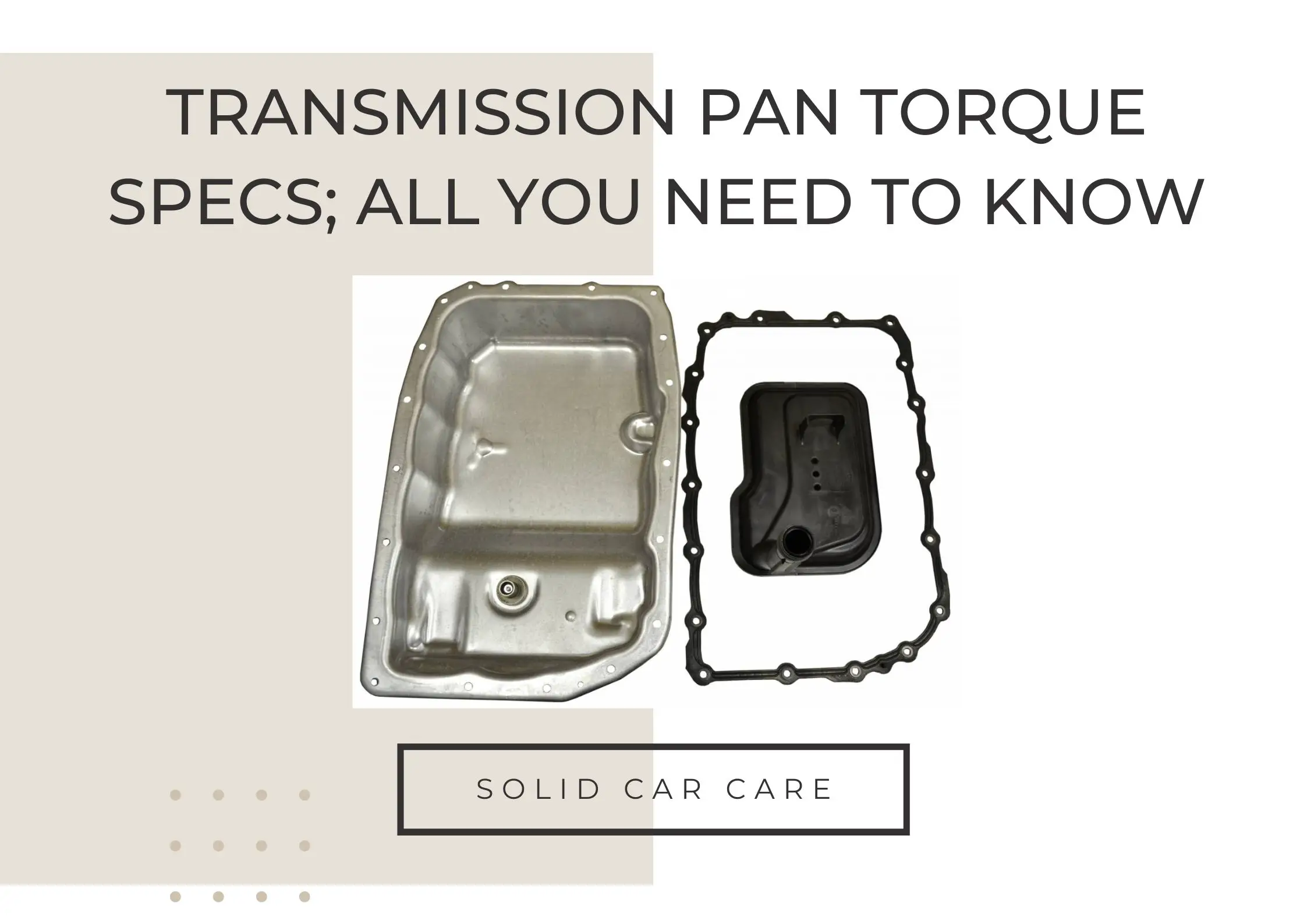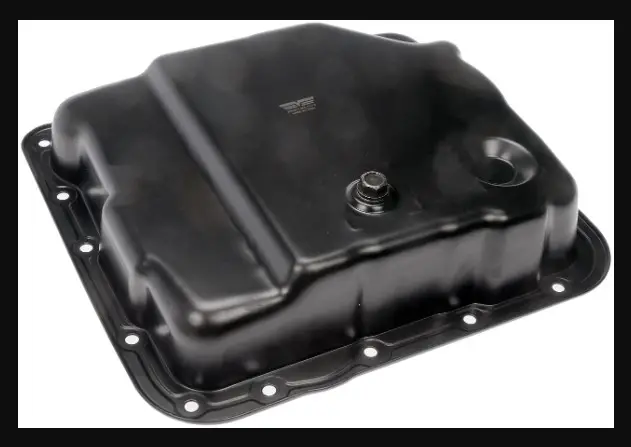Transmission Pan Torque Specs; All You Need To Know

When it comes to working on your vehicle’s transmission, attention to detail is crucial. One often overlooked aspect is the torque specifications for various components, including the transmission pan. Properly torquing the transmission pan ensures a secure seal, prevents leaks, and maintains the integrity of the transmission system.
In this article, we will explore the significance of torque specifications for transmission pans and provide insights into understanding and applying these specifications correctly.
Table of Contents
What is Torque, and why is it essential?
Before diving into the specifics of transmission pan torque specs, let’s first understand what torque is and why it is essential in automotive applications. In simple terms, Torque refers to the rotational force exerted around an axis. The twisting or turning force enables the transmission to transfer power from the engine to the wheels. In the context of torque specifications, we are concerned with the amount of force required to tighten the fasteners properly.
Torque units and measurements vary depending on the region and system used. In the automotive industry, torque is commonly measured in pound-feet (lb-ft) or Newton-meters (Nm). These units provide a standardized way of quantifying the rotational force applied to fasteners.
Transmission Pan Torque Specs Explained

As the name suggests, a transmission pan is a metal container located on the underside of the transmission. It houses the transmission fluid and serves as a reservoir. The pan is secured to the transmission housing using a series of bolts or screws. The torque specifications for these fasteners are critical to ensure a proper seal and prevent leakage.
Following the correct torque specifications is vital because insufficient torque can result in loose bolts, leading to fluid leaks and potential damage to the transmission system. Conversely, excessive torque can cause overtightening, resulting in stripped threads or even the deformation of the transmission pan itself.
Different types of transmission pans, such as steel, aluminum, or composite materials, may have different torque requirements. It is essential to consult the manufacturer’s recommendations or a reliable technical resource to determine the specific torque value for your transmission pan.
Transmission Pan Torque Specs Specifications for Specific Vehicle Models

The torque specifications for an oil pan typically range from 10-20 lb-ft, but it can vary depending on the vehicle make, model, and engine type. It is crucial to consult the manufacturer’s recommendations or a trusted technical resource for the specific torque value for your oil pan.
While general torque guidelines exist, following the torque specifications provided by your vehicle’s manufacturer is crucial. These specifications can vary based on the vehicle’s make, model, and transmission type. Vehicle manufacturers conduct extensive testing to determine the optimal torque values for each component, including transmission pans.
To find the torque specifications for your vehicle, refer to the owner’s manual or consult the manufacturer’s official website. Additionally, online forums and technical resources dedicated to automotive enthusiasts can also provide valuable insights and torque recommendations based on real-world experiences.
Here are a few examples of torque specifications for popular vehicle models:
- Ford F-150 (2015 model)
- Transmission pan torque: 10-12 lb-ft
- Toyota Camry (2019 model)
- Transmission pan torque: 9-11 lb-ft
- Chevrolet Silverado 1500 (2020 model)
- Transmission pan torque: 15-18 lb-ft
Remember, these values are provided as examples, and it is essential to consult the official documentation for your specific vehicle.
Can you over-tighten a transmission pan?
Yes, you can over-tighten a transmission pan. Excessive torque can lead to stripped threads, pan deformation, or gasket damage, resulting in leaks and potential transmission issues. Following the manufacturer’s recommended torque specifications and using a calibrated torque wrench to achieve the correct tightness without applying excessive force is essential.
Transmission Problems After Engine Swap: Causes, Symptoms, and Solutions
Solid Car Care
Proper Torquing Techniques for Transmission Pans
Now that we understand the importance of torque specifications and how to find them, let’s discuss the correct technique for torquing transmission pans.
A step-by-step process for torquing a transmission pan:
- Clean the mating surfaces of the transmission housing and the pan to ensure a proper seal.
- Place a new gasket or apply an appropriate sealant to the transmission pan.
- Align the pan with the transmission housing and hand-tighten the bolts or screws.
- Use a torque wrench to tighten the fasteners, following a cross-pattern sequence gradually.
- Repeat the tightening process until the desired torque value is reached.
Using a torque wrench correctly:
- Ensure the torque wrench is set to the recommended torque value.
- Hold the handle of the torque wrench firmly and apply steady force.
- Slowly increase the force until the wrench clicks or signals the desired torque is achieved.
- Avoid sudden or jerky movements that may lead to inaccurate torque readings.
Tips for achieving accurate torque values:
- Use a high-quality torque wrench calibrated regularly for accuracy.
- Avoid using extensions or adaptors, as they can affect torque readings.
- Always follow the recommended torque sequence to distribute the force evenly.
- Take breaks during the torqueing process to allow the gasket or sealant to settle.
How do you calculate torque specs?
Calculating torque specifications involves considering several factors, including the material being fastened, the desired clamping force, and the thread pitch or diameter. Here’s a general process for calculating torque specs:
- Determine the required clamping force
The clamping force depends on the application and the material being fastened. Consult engineering specifications, design guidelines, or industry standards to determine the desired clamping force.
- Identify the thread type and size
Determine the fastener’s thread type (such as metric or imperial) and the thread size (measured in diameter or pitch).
- Consult torque charts or guidelines
Torque charts provide recommended torque values based on the thread size, material, and desired clamping force. These charts are often available from fastener manufacturers or engineering references. Cross-reference the thread size and material to find the corresponding torque range.
- Consider additional factors
Take into account any additional factors that may influence the torque specification, such as the presence of lubricants, thread condition, fastener type (e.g., bolts, screws), and any specific requirements or recommendations provided by the manufacturer.
- Apply a torque wrench
Use a calibrated torque wrench to apply the calculated torque value to the fastener. Gradually increase the force until the desired torque value is reached, being mindful not to exceed the recommended maximum torque.
It is crucial to note that torque specifications can vary depending on specific applications and requirements. Always refer to the manufacturer’s guidelines, engineering specifications, or consult with professionals when dealing with critical or safety-critical applications to ensure accurate and appropriate torque calculations.
Solid Car Care
Conclusion
Properly torquing the transmission pan is critical in ensuring a reliable and leak-free transmission system. By understanding the significance of torque specifications, consulting the manufacturer’s recommendations, and following proper torqueing techniques, you can maintain the integrity of your transmission and avoid potential issues down the road. Remember, attention to detail and adherence to the correct torque values will go a long way in keeping your vehicle running smoothly.






